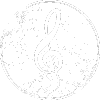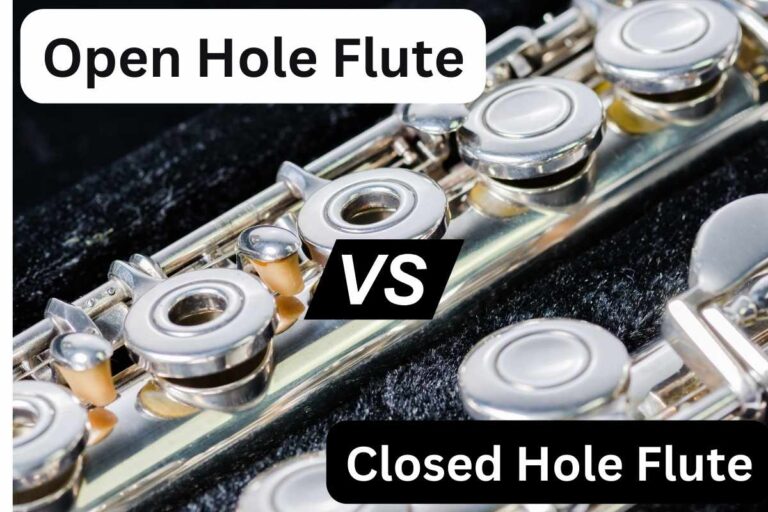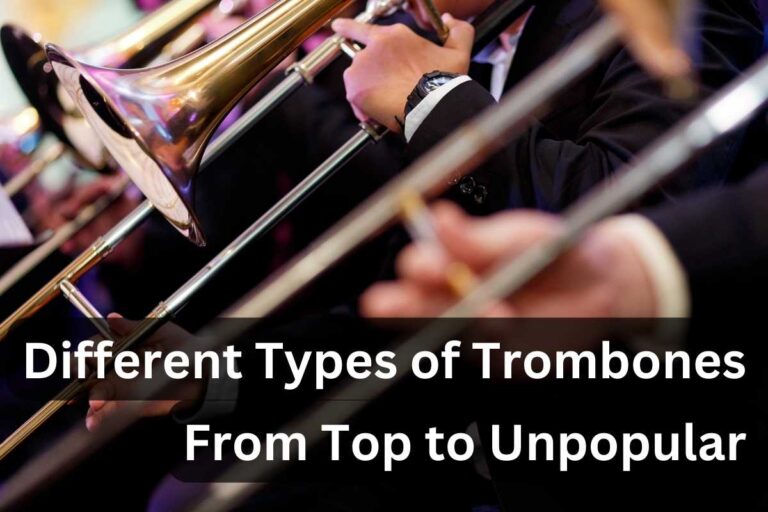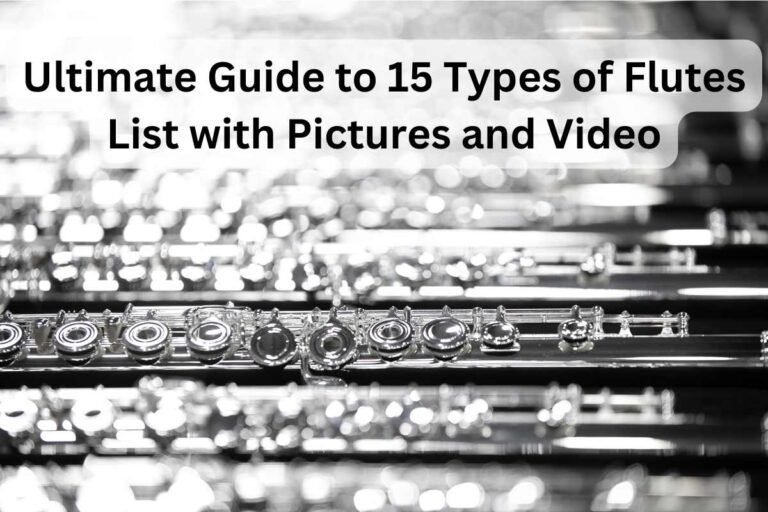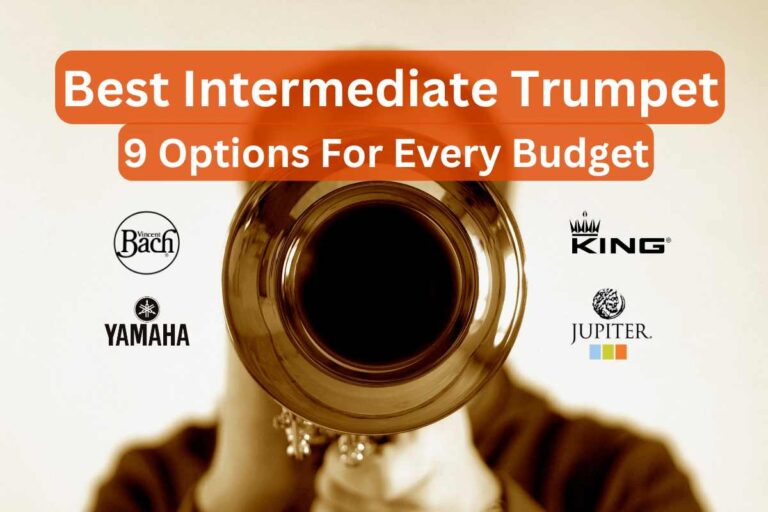What Key Is Trombone In — Bb Tenor, Eb Alto, Eb Bass Trombones Pitches (Fundamentals)
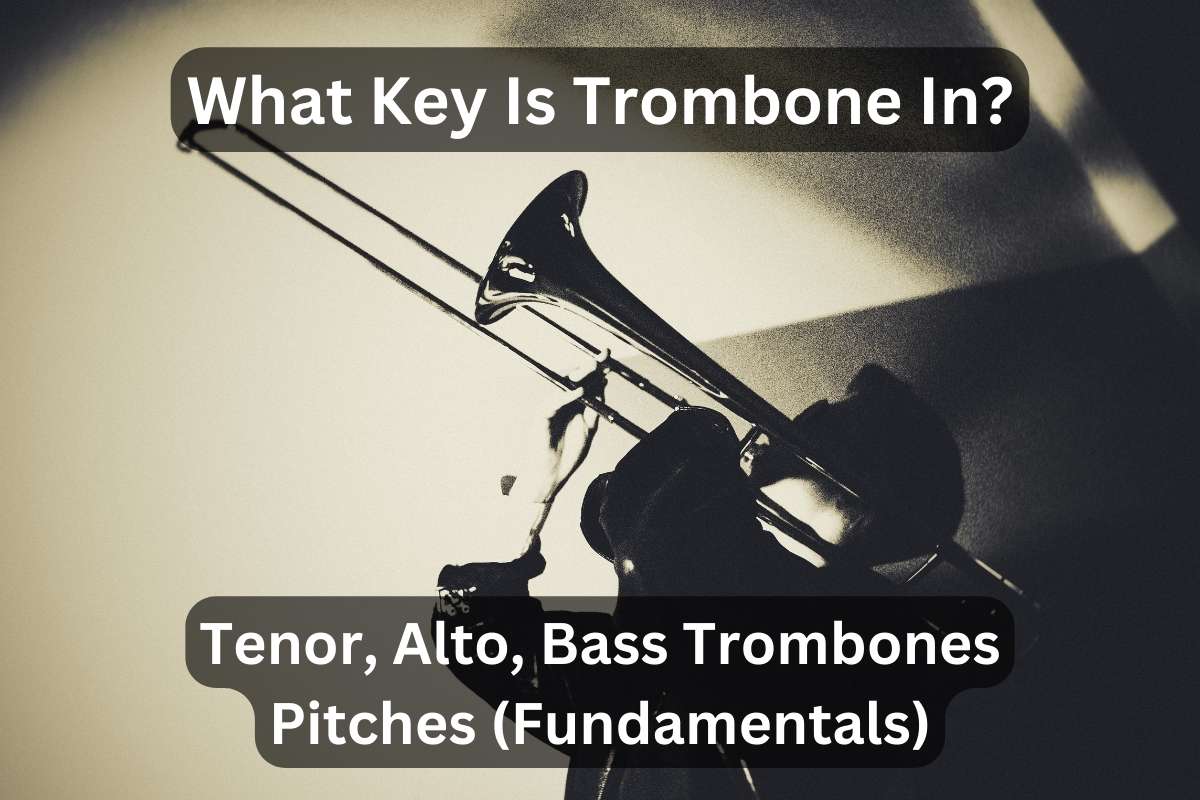
Want to know what key is trombone in? In this post, I will talk about the basics of the overtones of a trombone.
We will briefly discuss tenor, bass, alto trombones, pitches for them, and what clef to use when reading their keys (bass, tenor, alto, treble).
What Key Is Trombone In? (Answer: B♭)
The tenor trombone is the most popular and common variant. It is pitched in B♭, i.e., when you play a Bb (B flat) on a trombone and a piano, both of them produce the same pitch.
The B♭tenor trombone reads from the concert pitch bass clef, producing a non-transposing concert pitch in C — playing a C sounds like a concert C.
This applies to most other bass clef brass instruments. For example, the E♭ tuba reads and plays in a C concert pitch. This is a little confusing, but it goes back to the instrument’s fundamentals.
The trombone’s fundamental pitch is B♭, and its overtones are based on B♭, but it reads music in the key of C. Yet, we name it Bb trombone since the most basic pitch on the tenor trombone IS B♭ (the first position on the first partial).
You can play a B♭ trombone with transposed music, but you have to learn to play C as an open note. For example, in standard British brass band music, tenor trombones do read treble clef. (I’ll talk about it more in the “Transposition” part)

How Does Bb Tenor Trombone Work?
The length, thickness, and shape of the tubing form the sound of a trombone. It also determines which notes are more easily produced with the least effort.
B♭ is the root note of the trombone, and the notes around the harmonic series (relative fifth and others) are easiest to play. It involves changing the mouth and lips shape (embouchure) and breath pressure on the mouthpiece to switch to that note.
The slide of a trombone (unlike other brass instruments) changes the pitch and gives the distinctive glissando effect. Using the note, one can slide to change one note to another!!
With the slide mechanism, trombones could play chromatically in the Renaissance. Unlike all other wind (tho the trombone is brass) instruments, the trombone could play in any key, following its standardization in concert pitch. (Listen to the 13 Best Trombone Players in my other post)
So, What Are The Keys Of Different Types Of Trombones?
We have only talked about the tenor trombone. The other types are tenor trombones with F-trigger, alto, and bass trombones with valves.
F-attachment On B♭ Tenor Trombone
The fundamental pitch of a tenor trombone is B♭ — the slide position produces the B♭ harmonic series.
Tenor trombones have the option of an F-attachment. This lowers the pitch by a ¼ when you depress it, changing the fundamental harmonics to F — the “F” arpeggio becomes much easier, and the trombone widens its range.

B♭ Bass Trombone
Tenor and bass trombones are ≈ 9 feet long (2.7 m from mouthpiece to the bell’s end), so the bass trombones are also in B♭ and share the same fundamental and harmonic series as tenors.
The main difference is the bass trombone’s larger bore and additional triggers, which allow for greater range in lower registers. (Find out the Best 5 Bass Trombones in my post)
What Key Is Trombone In: B♭ Bass Trombone With Rotors
The pitch of bass trombones may vary depending on the attachment variations.
A single trigger drops the pitch a ¼ down to F, similar to the F-attachment in the tenor trombone.
With one more dependent rotor, the bass trombone lowers to D.
And two independent rotors would give you Gb, giving much flexibility!

E♭ Alto Trombone
The common alto trombone is in E♭ pitch, though F alto (more traditional) trombones have existed since the past century.
The alto trombone plays an E♭ in the first position, but the sheet music for the alto trombone is read in concert C pitch, similar to the other trombones. That means the slide positions are the same as a tenor trombone, but a little close together.
Most of the classical composers — Bach, Beethoven, Mozart, Mendelssohn, Schubert, Schumann, and Berlioz — all wrote parts for the alto trombone. Even Brahms and Dvořák included alto trombone parts in their works, though nowadays, we play them on a tenor trombone.
What Are Keys and Fundamentals (Overtones)?
A key is when a musical instrument plays a concert pitch by playing C. C on the trombone produces a concert C.
When a clarinet, trumpet, or tenor sax plays a C note — you hear concert B♭. Make a C on the alto sax — and you hear concert E♭. A French horn plays a C, but concert F is heard.
Fundamental means the harmonic series you produce on the instrument. Simply put, when you play a note in the first position without moving the slide or depressing valves, you create a series of partials that begin with the fundamental pitch.
Traditionally, B♭ is the fundamental of most low brass instruments: trumpets, euphoniums, B♭ French horns, the BBb tuba, and so forth. They all share the same overtone series, with the B♭ concert root note.
Some brass are in a different fundamental (or in a different overtone series). For instance, we got C trumpets or E♭ trumpets, alto E♭ horns or F horns, and tubas — all in various fundamentals.
Interesting fact: Tenor trombones with a C fundamental were almost equally standard in mid-19th-century Britain and France.
What Is Transposition And How Does Trombone Transposition Work?
Transposing instruments produce a different pitch than what you read in the notes.
The B♭ trombone is NOT a transposing, and its notations are in concert pitch.
If you play a B♭ on the trombone and a B♭ on the piano, both of the instruments give the same pitch, meaning you play the note as you read.
You can transpose music and play it on the B♭ trombone, although you would learn to interpret the notes. For example, play C as an open instead of B.
The point is that it is not instruments that transpose but the music that was written for them!!
Written Key Is Not the Same as Instrument Base Tone (Fundamental)
It is very much necessary to differentiate between things written in the base tone (fundamental) and the music key. I love the analogy of “built-in” vs “written-in”
- Base Tone — The fundamental pitch we use to tune our instrument, its natural resonance.
- Written Key — How you interpret your notes in the sheet music
The base tone (or fundamental resonance) of an instrument refers to the lowest note in its natural position (the first position for trombones). This is the sound you make, NOT the note you read. The tenor trombone has a B♭ fundamental resonance and the first position pedal tone sounds as B♭.
By contrast, the written key is how you notate the music for the instrument. B♭ tenor and bass trombones are written in C, while E♭alto trombones are in C.
What Key Is Trombone In: Bass Clef vs. Tenor Clef vs. Treble Clef
Each clef has its purpose, benefits, and challenges

Bass Clef
When the trombone player is reading bass clef, he plays in “concert pitch” — whatever note you read on the page, you will play that exact note. This is straightforward, and no need for transposition.
In the bass clef, the trombone sounds exactly as the composer intends you to hear.
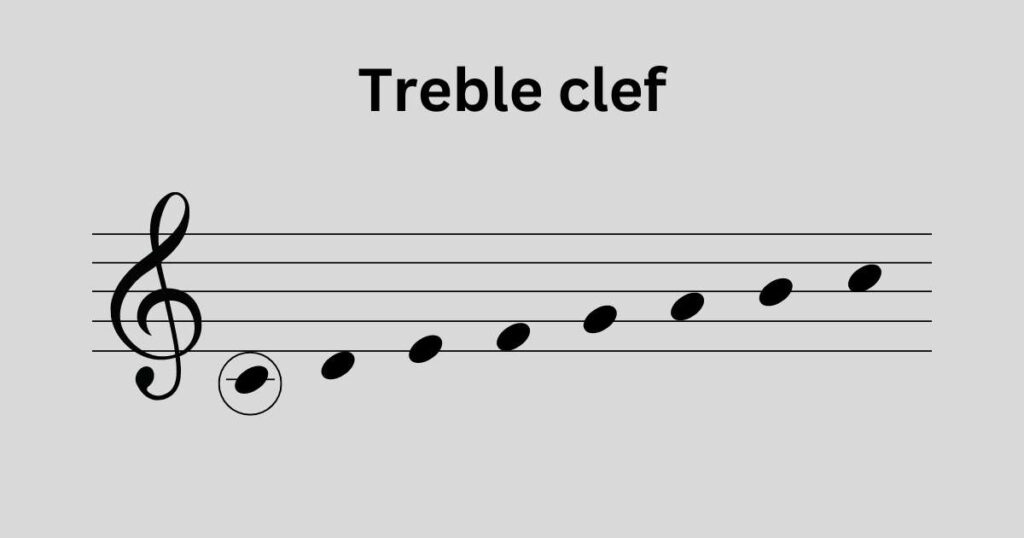
Treble clef
However, all this changes with the treble clef music for trombones. In this case, the trombone IS a transposing instrument, where the note you read does not indicate the sounding pitch.
For example, in B♭ treble clef, a C notation sounds like a B♭. This means you need to play every note in one whole tone lower.
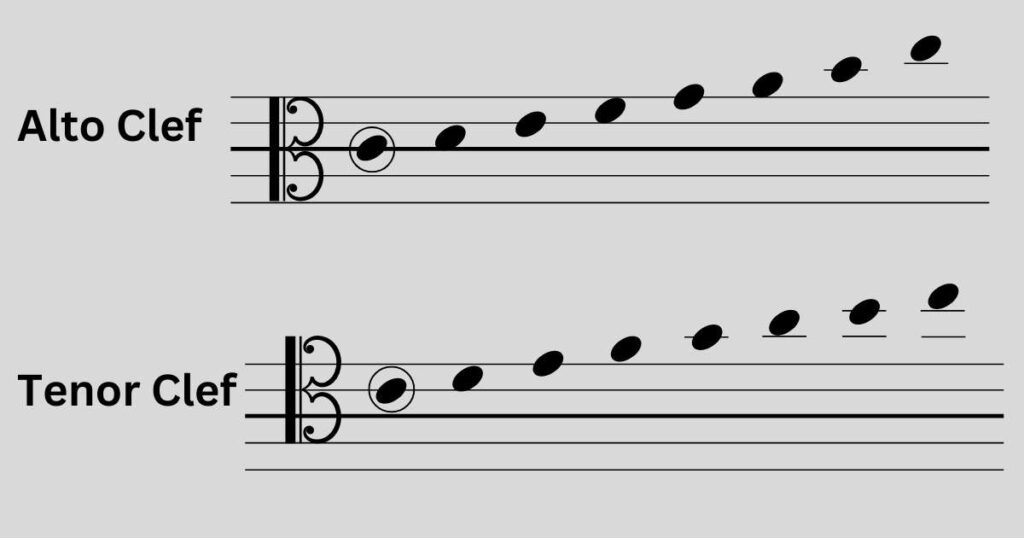
Alto Clef and Tenor Clef
We use the alto clef (middle C on the 3rd line) mainly for violas and alto trombones. It’s useful for learning the first trombone parts since it uses less of ledger lines, keeping the score clean and neat.
The tenor clef (middle C on the 4th line) is most common for cellos, bassoons, and tenor trombones. It keeps most notes within the staff, PLUS it makes the higher notes easier to read!!
The B♭ trombone is a tenor horn, and many pieces and parts are completely above the bass staff (which are hard to read).
For a trombonist, a tenor clef is a necessity, especially for higher-level pieces in the higher registers. If you choose to solo or join a college — tenor clef is a MUST.
A majority of solos are in either tenor clef exclusively or a combination of bass and tenor clefs (changing back and forth).
A Practical Approach to Clefs
When learning the tenor, alto, and treble clefs, it is easiest to approach each clef as a stand-alone and avoid shortcuts or comparisons with other clefs.
While there are similarities — keep the clefs separate in your mind for smoother transitions between them (and accidentals) and make them your second nature.
What About Other Brass And Wind Instruments?
The tuba, trombone, bass trombone, euphonium, and baritone are all concert-pitch reading instruments.
This means the note on the score matches the pitch that comes out when you play it. When these instruments play a C notation, you’ll hear a concert C. This is also true for bass clef euphonium, bassoon, string bass, and timpani.
Other instruments, however, transpose their music. For example
- Bb Trumpet, clarinet, bass clarinet, tenor saxophone, and treble clef euphonium are B♭ instruments and plating a written C gives a concert B♭
- Alto saxophone, baritone saxophone, and alto clarinet are E♭ instruments— a written C comes out as a concert E♭
- A clarinet written C sounds as A
- French and English horns are in F and a written C produces a concert F
- D♭ piccolo (though rare) plays a written C, but you hear D
To sum up, transposing instruments— trumpets, clarinets, saxophones — do not sound in concert pitch, so that means you have to transpose music to concert pitch. Non-transposing instruments — trombones and tubas in bass clef — read and play directly in concert pitch.
Conclusion — Tenor Trombone Is In the Bb Key!
The tenor trombone is in the B♭, the alto trombone is in E♭, and the bass trombone is also in B♭!
Trombonists read music in concert C pitch and do not transpose. Different clefs — Bass, Tenor, Alto, and Treble — make it easy to read and play trombone music. (Read my post with the Full Trombone Anatomy)
